10 Tricks to Make Your Vegetable Garden Look Beautiful — 'They Really Can be as Pretty as Flowers!'
Planting a vegetable patch doesn't have to mean sacrificing beauty in your yard — here's how experts make edible gardens look amazing, too
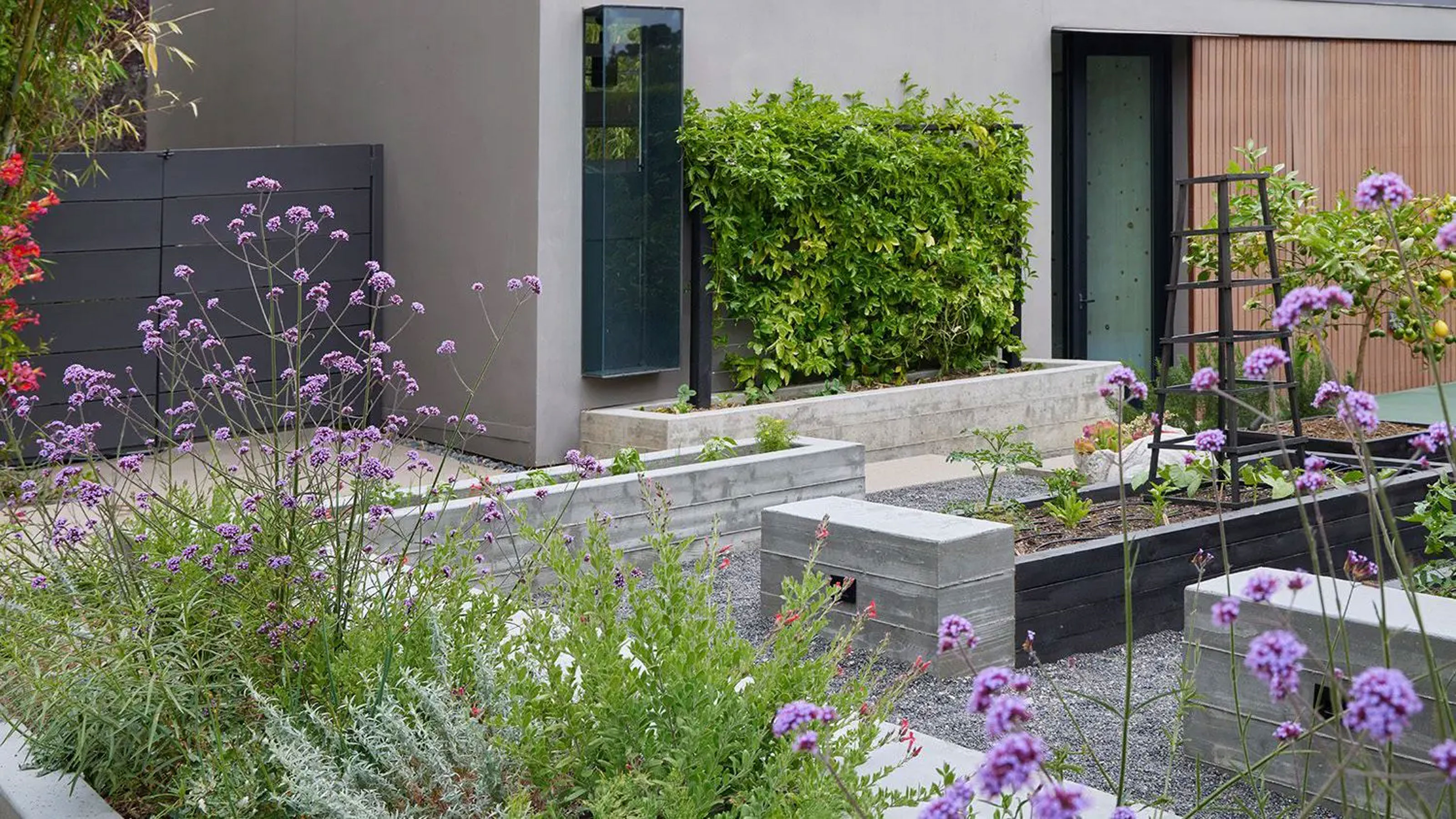

I love the idea of growing fruits and vegetables, but when I think of the types of yards I see where edible crops take centerstage, they often look more like community gardens than beautifully landscaped outdoor spaces.
So, what's the truth — can vegetable gardens be good-looking? 'Many edible plants, especially fruiting shrubs, offer lovely ornamental features that can complement and elevate any style of garden planting,' says Christina Ching, gardening expert and the author of The Layered Edible Garden. 'Not only do the larger plants anchor garden beds, they can also serve as a showy focal point or help soften the look of hardscape features.'
If, like me, you're keen to learn the secrets of how to make a vegetable garden look as pretty as an ornamental one, these 10 tips from home-growing experts will set you in good stead, and mean your outdoor space can double up for providing you with fruit and vegetables, while also offering an inspiring view out into your yard.
1. Don't (always) start from seed
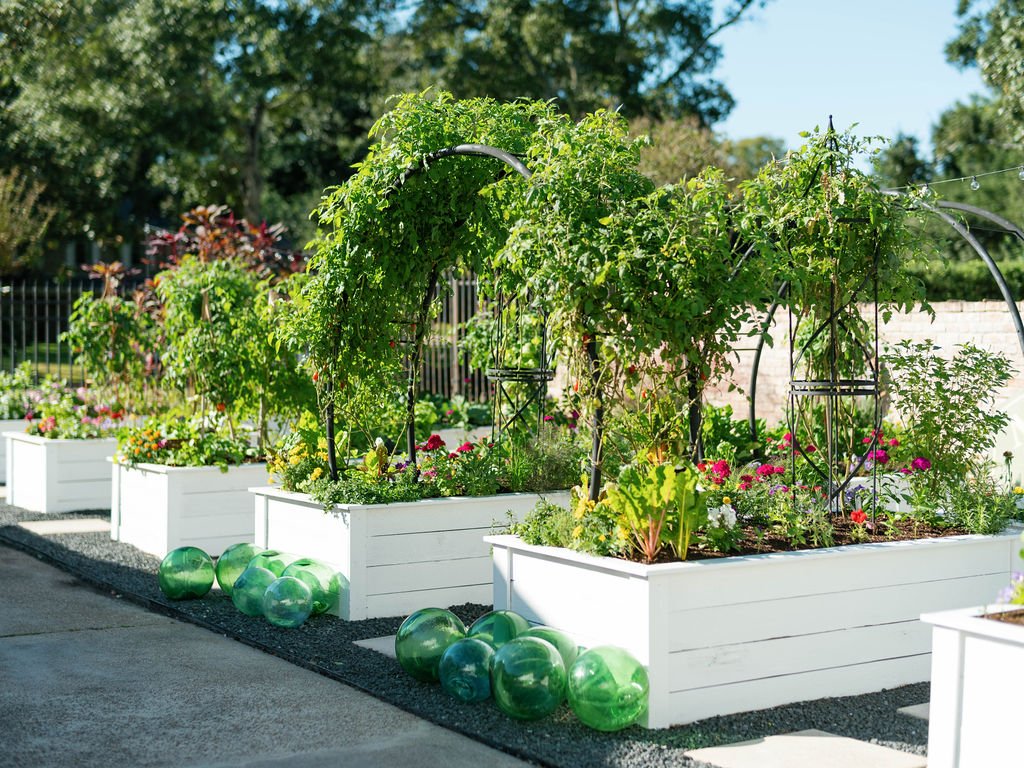
The one lesson you need to learn about a vegetable garden is that it's not going to look the same year round, nor season to season. 'Selecting seasonally appropriate flowers, herbs and vegetables is the first step to creating a beautiful garden experience,' explains Jen McDonald, garden designer and co-founder of Garden Girls. Planning different planting for different times of year will ensure you have a rich and varied garden, both in terms of crops and its looks.
'You must also consider the time from planting to harvest for vegetables,' Jen says. 'Starting with 4” transplants will fill void spaces faster than starting with seed. There will inevitably be empty spots as seasons change and veggies are harvested. Adding in a mixture of annuals and perennials as anchors will help the gardens feel full year-round.'
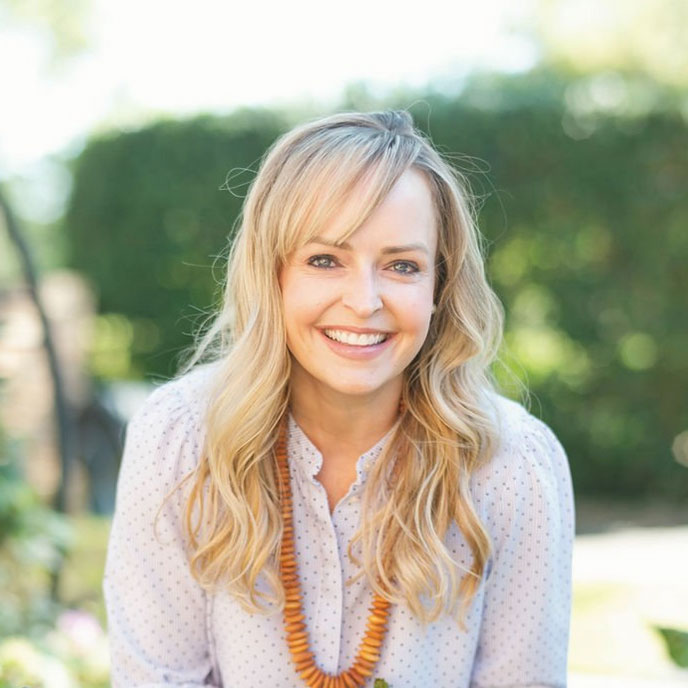
Jen McDonald is a garden designer and co-founder of Garden Girls, based in Houston, Texas. With 14 raised garden beds and over 400 square feet of garden space, Jen grows everything from peanuts to pumpkins, amaranth to artichokes. Her goal is to “elevate the everyday” through kitchen garden design and turnkey installation.
2. Do your research
While you might extend your vegetable gardening plan to what grows best when, a little extra research will help your edimentals look better in combination, too. 'When considering edible plants that can also pull their weight in providing year-round interest, take the time to research their flowering colors and times,' Christina Chung says. 'Many fruit trees and shrubs are first to flower at the end of winter.'
'Also consider their leaves — are they fine texture or bold and coarse? Do their leaves turn color in the autumn and put on a dazzling show of fiery oranges and reds before dropping? How about the stems which will persist through the winter–some, like blueberries, are bright red and look beautiful in a snowy landscape.'
3. Use herbs as fillers
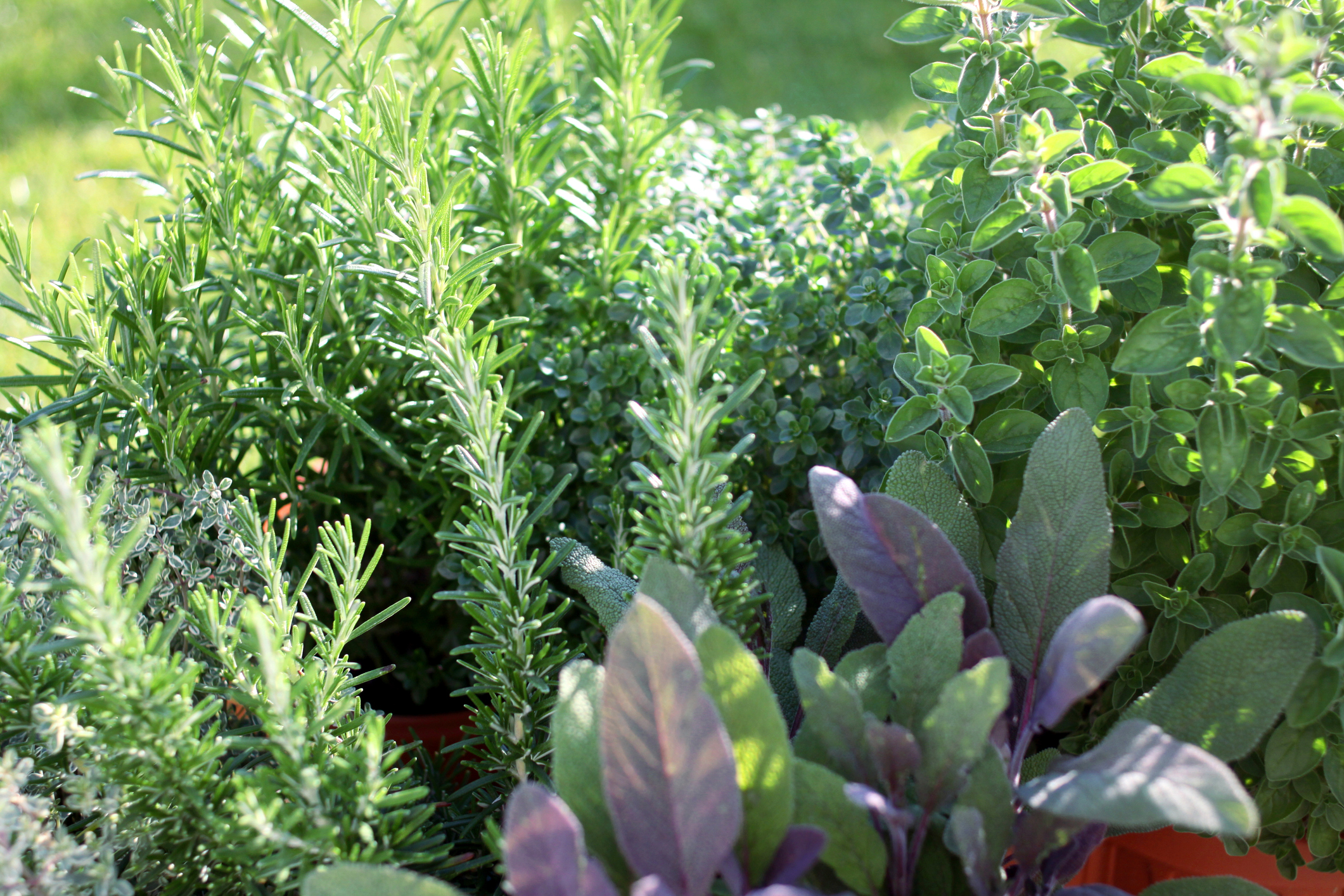
When you're looking at planting edible crops, herb gardens are just as important as fruit and vegetables to grow. The great thing about them? They often work really well in fleshing out a planting scheme.
'Incorporating herbs along borders is an easy start,' Jen says. 'Position herbs that trail, like thyme and oregano, in the front or corners, with taller herbs like rosemary, sage, parsley and dill intermixed in the middle of garden beds or along the back.'
4. And pick colorful varieties
Sometimes, vegetable gardens can just feel like an indeterminable sea of green, but there are plenty of colorful elements you can grow in every realm of edible crop to suit any garden color scheme.
'For example, double down on colorful herbs,' says Lara Hermanson, principle and co-founder of urban gardening studio Farmscape. 'Purple Shiso, Opal Basil, Golden Sage and Lime Thyme add depth and highlights to an otherwise green monotone color palette. Plus, these crops can last for more than one season and are cut and come again, so you don't need to purchase fresh herbs for your recipes,' Lara adds.
5. Think about height and texture

Color isn't the only consideration, however. 'For a beautiful edible garden, you’ll want a nice mixture of plant height, texture, form and color,' Jen tells me. 'Visualizing the form of each of herbs is a good place to start.'
'Oregano tends to sprawl and spill while rosemary can be pyramidal,' Jen explains. 'Chives and parsley add vertical interest. Dill has a billowy airy appearance. When paired together in a garden, the effect is lovely.'
Planting interesting vegetables on different scales will only make your flower beds feel more interesting. 'The addition of larger vegetables such as artichoke, cabbage in rows, Asian greens and cauliflower when mixed with edible flowers (think nasturtium, marigold, pansies) and herbs also make beautiful companions,' Jen says.
6. Don't forget flowers can be edible too
Yes, that's right — just because it's a vegetable garden, doesn't mean you shouldn't be planting flowers. 'Use your borders to plant edible flowers,' suggests Lara from Farmscape. 'Snapdragons, Calendula, Nasturtium, Pansies and even Daylilies are edible flowers that also attract pollinators, and are perfect ways to beautify your garden'
Again, consider which is best for the season you're looking to grow in. 'Nasturtium grow in warmer conditions while pansies prefer cool temperatures,' Jen explains.
7. Include bold-colored vegetables
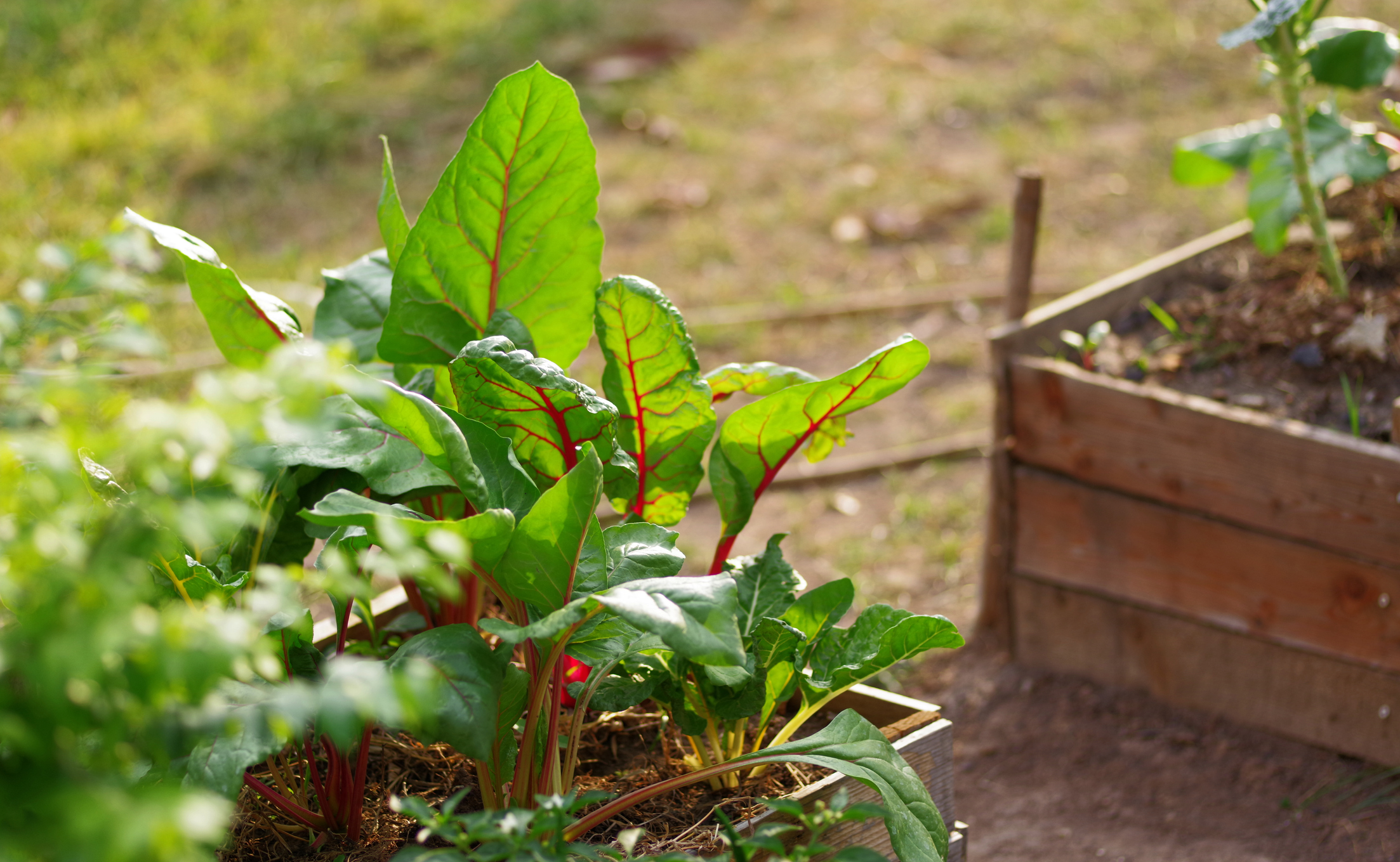
The same goes for vegetables — the right varieties can make brilliant accents that bring structure to your vegetable container gardening.
'Seek out varieties with interesting colors, leaf venations, unique textures, interesting flowers and they can be seamlessly worked into a garden annual display,' gardening expert Christina Chung says. 'Swiss chard and many mustard greens come in wonderful pinks and purples, for example.'
8. Pick what you think is prettiest
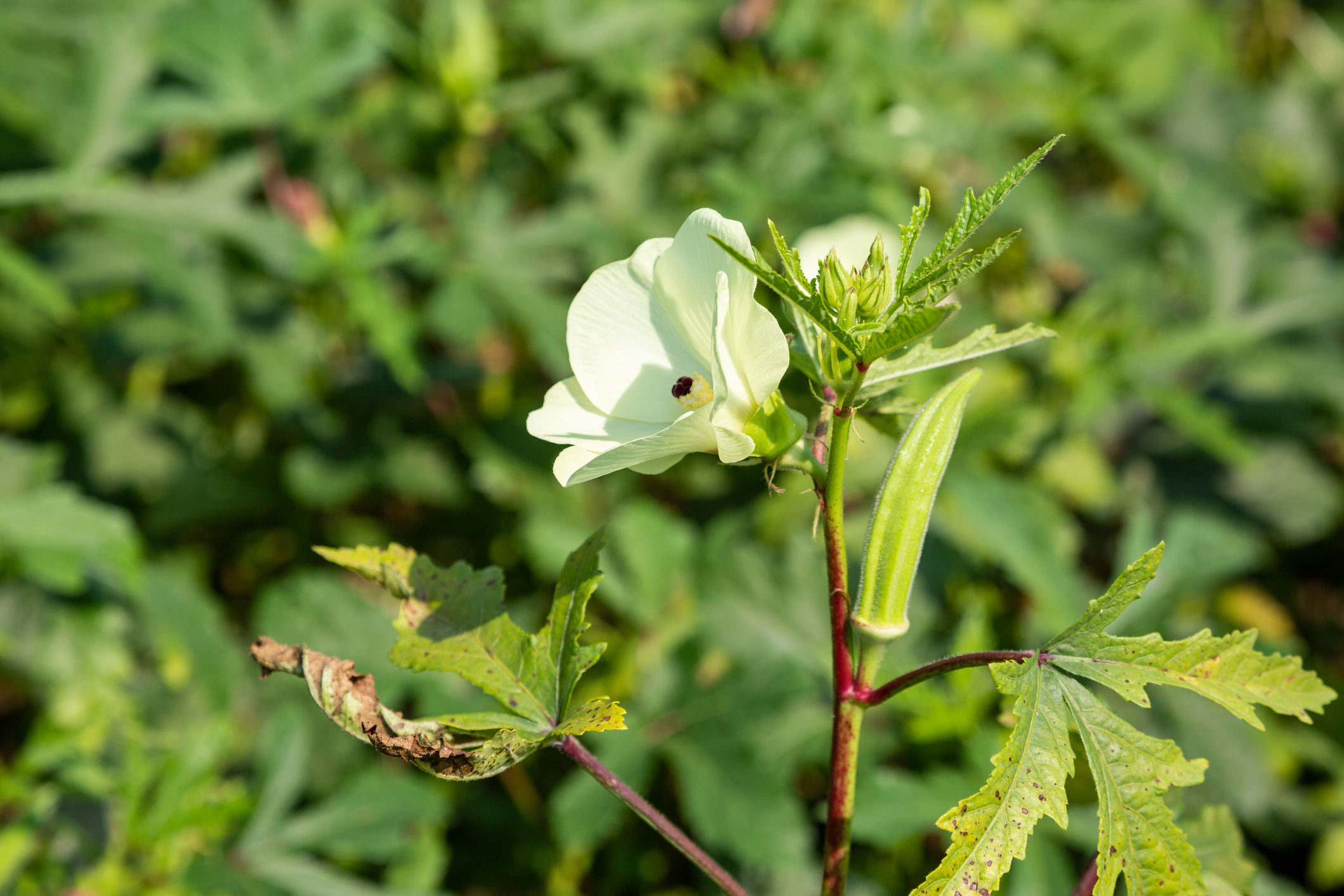
When you're looking for the best of both worlds, sometimes you can compromise a little. This means potentially adding something to your vegetable beds that looks pretty, but that you're not that interested in eating. 'Grow what you love to see and eat but don’t be afraid to experiment with something unique or different,' Jen from Garden Girls advises. 'I grow okra for the flowers. Don’t tell anyone but I can’t stomach the texture. However, the look is stunning and my neighbors are often the summer recipients of baskets of fresh organic okra.'
One of Christina's absolute favorites is the Cornelian cherry: 'Not as common in our North American gardens but they are thankfully becoming more widely available since they make beautiful late-winter flowering small trees,' she says. 'When only a small handful of plants are waking up in February-March, these trees are in full bloom with bright yellow clusters of flowers on bare branches that feed early pollinators. Mild tasting cherry-like red fruit develop during the main growing season and are ready for harvest towards early fall.'
9. Consider planting sweet potatoes
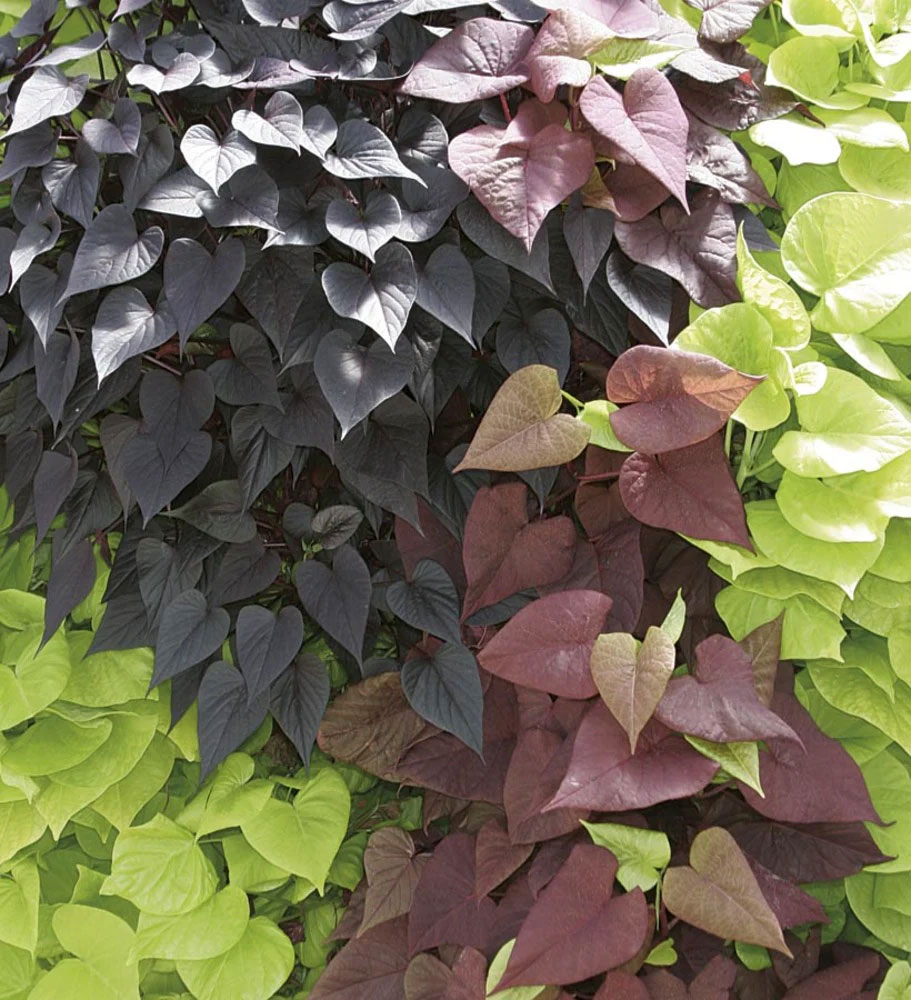
When you think about potential vegetable crops that might make a yard look prettier, potatoes probably aren't high on your list, right?
'Take a look at sweet potatoes,' Lara Hermanson says. 'These vining summer root crops look a lot like their container-favorite cousin, with beautiful deep purple trailing leaves and delicious sweet potatoes at the end of the summer.'
10. Grow for your cut flower garden
Vegetable can yield some pretty stunning foliage than can complement a cut flower garden. We often see brassicas used in ornamental displays, but 'feature peppers, chilies and eggplants in summer,' Lara suggests. 'These nightshades have lovely foliage, cute flowers and beautiful, colorful fruit. You can use eggplant leaves and pepper branches in flower arrangements as well.'
'The bottom line to planting beautiful edible gardens is to remember that gardening is an ever-changing and evolving process,' Jen from Garden Girls surmises. 'Edible gardens will never look exactly the same season to season or year to year. Employing a combination of vegetables, herbs, flowers and perennial anchors will add the most beauty and interest to your landscape!'
Be The First To Know
The Livingetc newsletters are your inside source for what’s shaping interiors now - and what’s next. Discover trend forecasts, smart style ideas, and curated shopping inspiration that brings design to life. Subscribe today and stay ahead of the curve.

Hugh is Livingetc.com’s editor. With 8 years in the interiors industry under his belt, he has the nose for what people want to know about re-decorating their homes. He prides himself as an expert trend forecaster, visiting design fairs, showrooms and keeping an eye out for emerging designers to hone his eye. He joined Livingetc back in 2022 as a content editor, as a long-time reader of the print magazine, before becoming its online editor. Hugh has previously spent time as an editor for a kitchen and bathroom magazine, and has written for “hands-on” home brands such as Homebuilding & Renovating and Grand Designs magazine, so his knowledge of what it takes to create a home goes beyond the surface, too. Though not a trained interior designer, Hugh has cut his design teeth by managing several major interior design projects to date, each for private clients. He's also a keen DIYer — he's done everything from laying his own patio and building an integrated cooker hood from scratch, to undertaking plenty of creative IKEA hacks to help achieve the luxurious look he loves in design, when his budget doesn't always stretch that far.
-
 My 10 Favorite Designs at Milan Design Week 2025 — Out of the Hundreds of Pieces I Saw
My 10 Favorite Designs at Milan Design Week 2025 — Out of the Hundreds of Pieces I SawThere is a new elegance, color, and shape being shown in Milan this week, and these are the pieces that caught my eye
By Pip Rich
-
 Iridescence Is Chrome’s More Playful, Hard-to-Define Cousin — And You're About to See It Everywhere
Iridescence Is Chrome’s More Playful, Hard-to-Define Cousin — And You're About to See It EverywhereThis kinetic finish signals a broader shift toward surfaces that move, shimmer, and surprise. Here's where to find it now
By Julia Demer